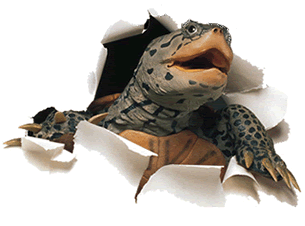Alan Nathan – Alumni Spotlight
1. Where are you from?
I am originally from the small town of Rumford, Maine, the same hometown as former US Senator and Secretary of State Edmund Muskie.
2. What schools did you attend?
Montgomery Blair High School (Silver Spring MD), 1964
University of Maryland, 1964-68, BS 1968
Princeton University, 1968-9, 1971-5, MS 1972, Ph.D. 1975
(1969-71 was spent in the U. S. Army)
3. What led you to the University of Maryland?
Our family moved to Silver Spring, Maryland when I was in high school, which made it natural for me to attend the University of Maryland. I was a commuter for three years but lived on campus during my last year (Easton B).
4. How would you describe your experience here?
I got an excellent undergraduate education at UMD. I tried to take advantage of a variety of opportunities that were thrown my way. Some examples: participation in the campus honors program; research in the physics department (doing such research is pretty common today but not when I was an undergrad); taking grad-level courses while still an undergrad. I believe I made the most of these opportunities, to the extent that I was very well prepared for graduate school and ended up getting into my first choice (Princeton).
I’d like to take the opportunity to mention my two favorite teachers at UMD. First is Bill Hornyak, who was my teacher for both the sophomore-level E&M and optics course and the graduate quantum course. His enthusiasm for physics was infectious. Second is Alex Dragt, who taught the junior-level advanced classical mechanics and E&M courses. From him I learned the power of careful analytical thinking, which has served me well in my physics career.
5. Where do you currently work?
I am a physics professor at the University of Illinois at Urbana-Champaign. There are three major components to my job: teaching, research, and service. I teach mostly undergraduate physics. I especially like teaching the large introductory courses. My research has two components. The “conventional” component is medium-energy nuclear/particle physics, where I do experiments that teach us about the structure of protons and neutrons, the constituents of the atomic nucleus. These experiments require the use of accelerator facilities. Currently, this component of my research program involves experiments in Lund Sweden, Jefferson Laboratory in Virginia, and the so-called HIGS facility at Duke University. The “unconventional” component of my research is the physics of baseball, where the work involves theory, experiment, and computation. I maintain a web site devoted to the physics of baseball (http://webusers.npl.uiuc.edu/~a-nathan/pob) that many folks have found useful, from kids doing science fair projects, to college students working on Master’s theses, to fans trying to settle bar-room bets, to reporters looking for a timely story (e.g., on the effect of the altitude at Coors Field on the flight of a baseball). This work has landed me some nifty consulting gigs with Major League Baseball, the NCAA, the Amateur Softball Association, and others. My involvement with baseball is the ultimate in “having your cake and eating it too,” since it combines my two great passions in life: physics and baseball.
6. Do you enjoy your career?
See above answer, where it is pretty clear that the answer is a resounding YES.
7. What positions have you held since graduating from UMD?
After graduating UMD, I immediately went to graduate school (Princeton) to get my Ph.D. That quest was interrupted for two years when I was drafted into the U.S. Army—this was the Vietnam era. After completing my Ph.D. in early 1975, I got a temporary postdoctoral research position at Brookhaven National Laboratory on Long Island, where I worked until landing a faculty job as an Assistant Professor of Physics at U. of Illinois in mid-1977. I arrived in Champaign-Urbana the day before Elvis Presley died and have lived here ever since. I worked my way up through the academic ranks fairly quickly (Assoc Professor in 1980, Professor in 1985). Along the way, I had several sabbaticals (Paris, Seattle, …), a job as an Assistant Dean in the College of Engineering, and a 3-year stint as Associate Head for Graduate Programs.
8. What advice would you give current students?
My primary advice is to work hard as an undergraduate and take advantage of the many great opportunities available to you as a student at a large research-oriented university. In particular, get involved in a research project working with a professor. Learn how to communicate, whether it be written or oral.

